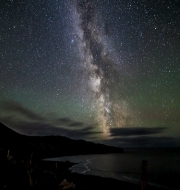China sets up first dark sky reserve in Tibet to limit light pollution
China has established country’s first dark sky reserve for astronomical observation in the Tibetan prefecture of Ngari, bordering Nepal and India.
The reserve was jointly launched by the China Biodiversity Conservation and Green Development Foundation (GDF) and the regional government of Tibet.
Dark-sky reserve: It is an area that is kept free of artificial light pollution. The purpose of a dark sky preserve is generally to promote astronomy. It usually surrounding a park or observatory.
Key Facts
- The Ngari Dark reserve aims to limit light pollution by stepping up protection of dark-sky resources for education and tourism development.
- It covers an area of 2,500 square kilometres. The first dark sky reserve is considered only the first step undertaken by China in protecting the area from light pollution.
- The reserve will also try to seek accreditation from the International Dark-Sky Association, a non-profit organisation based in the US.
- The accreditation will help the reserve in preserving and protecting the night time environment and dark skies globally.
Ngari in Tibet is among the best sites for astronomical observation on earth, due to its high altitude and large number of cloudless days throughout the year. However, in the recent times inflow of people from other areas has given rise to increasing urbanisation and thus the associated risk of more light pollution.
What is Light pollution?
Light pollution is artificial brightening of the night sky caused by man-made lightening sources, which has a disruptive effect on natural cycles and inhibits the observation of stars and planets. It is also known as photopollution or luminous pollution and basically is the misdirected or obtrusive of natural light by excessive artificial light.
Month: Current Affairs - June, 2016


